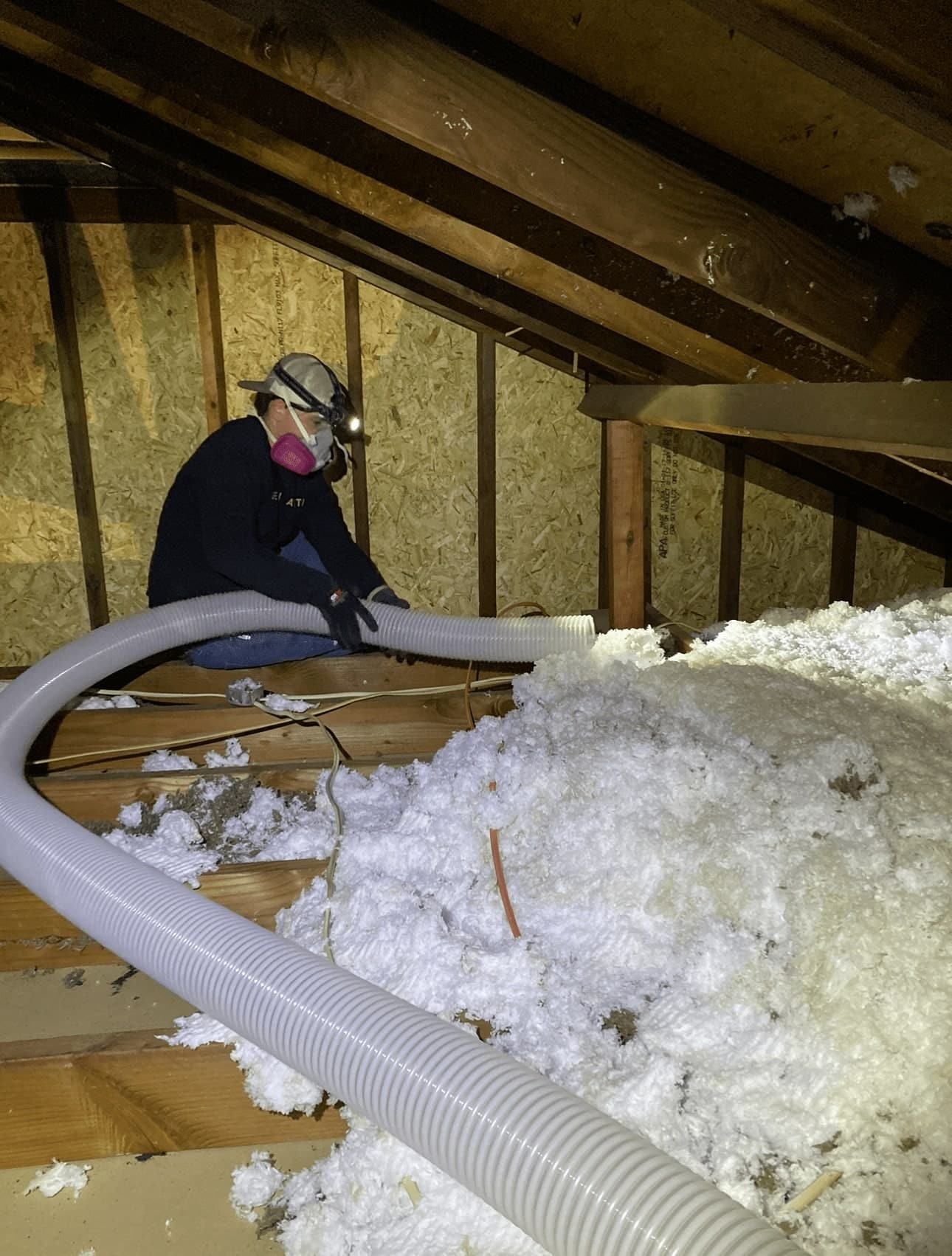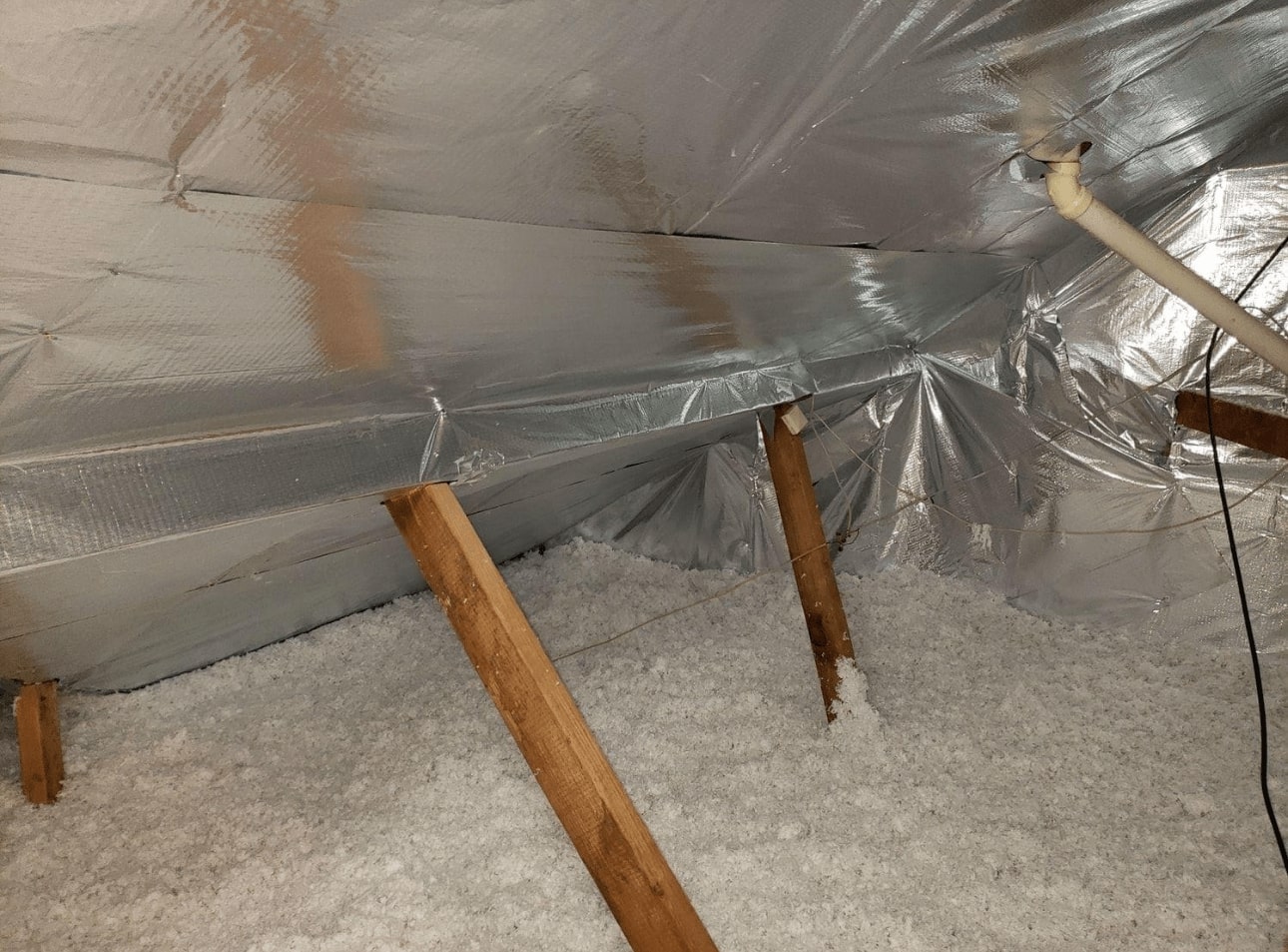The Ultimate Guide To Green Attics
The Ultimate Guide To Green Attics
Blog Article
The Facts About Green Attics Uncovered
Table of ContentsThings about Green AtticsWhat Does Green Attics Do?The Definitive Guide for Green AtticsGetting My Green Attics To WorkThe Green Attics DiariesThe Only Guide for Green AtticsAn Unbiased View of Green Attics
Building codes require that air spaces in between smokeshafts and flooring or ceiling assemblies with which they pass be secured with a non-combustible fire stop (see Figure 5-3 and Figure 5-4). There is frequently a gap between the party wall (such as the common wall surface between units in duplexes, triplexes and row residences) and the side of the attic room floor.
A heavy polyethylene sheet which is caulked with acoustical sealer and stapled to the ceiling frames the electrical box. An electrical wire diverts from the electric box and down with a hole right into an interior wall surface. Holes around electric wires are loaded with caulking or foam sealant, and caulking seals gaps along the top of the indoor walls.
After air securing, attic air flow is your 2nd line of protection versus the water vapour that might have found its means into the attic. It makes certain a chillier, well-vented attic room space much less prone to the formation of ice dams at the eaves.
A Biased View of Green Attics
You may need to situate roof or soffit vents from outside if they are not clearly visible from inside the attic. Homes with peaked roof coverings and available attic rooms are the most convenient to vent by utilizing the ratio of 1 to 300. This ratio refers to unobstructed vent location to the insulated ceiling area.

The place of vents is as vital as their number and kind. Typically, a combination of types and places will certainly function best. The following Parts detail the finest technique relying on your attic room kind. After you have checked the attic room and lugged out any type of therapeutic work, focus first on air and wetness control.
All about Green Attics
On the various other hand, spray foam uses air sealing and an initial layer of excellent quality insulation that can be covered approximately the preferred RSI (R) level. If the attic room retrofit is being finished in combination with indoor restorations, the easiest approach is to mount a new, single air and vapour obstacle on the bottom of the ceiling joists.
Spray foam or inflexible board insulation can help link the gap in this location. Cut rigid board to fit in between the ceiling joists and to extend from the outside wall leading plate towards the attic.
Remove existing insulation from the area you are functioning on and set it to one side. Caulk all edges, voids and joints, see Figures 5-10 and 5-13.
Spray foam service providers can install closed-cell foam between the joists to air seal and include insulation at the same time to the ceiling. All existing insulation and dirt must be eliminated initially to permit for a good bond.
Facts About Green Attics Revealed
(https://www.anyflip.com/homepage/xxggv#About)
This eliminates roof venting and develops what is called a hot roof, where the attic room space comes to be component of the conditioned (heated and cooled down) home space. This procedure might be appropriate for some attics, however do not continue without authorization from your building inspector, and afterwards only utilize a licensed spray foam specialist that recognizes with the process.
If there are blockages above the joists, such as with a truss roof covering, it may be most convenient to put batt insulation right into the joist areas and after that utilize loose-fill insulation to develop a complete blanket of insulation over the joists and around all obstructions. Loose-fill insulation is also great on its own, especially in irregular or blocked areas.

Green Attics Can Be Fun For Everyone
Use frustrates in between each rafter area to avoid it from being obstructed (see Figure 5-11). Shield over and listed below cross bracing, splitting or cutting the batt to fit the cross bracing as highlighted in Figure 5-12. Alternatively, cut one batt into a collection of wedges and afterwards fit a wedge under each support.
The initial layer of batts ought to be thick sufficient to completely load to the top of the joist area. The 2nd layer can then run perpendicular throughout the joists to block any type of warm flow through and around the joists (see Figure 5-13). Spray foam insulation. Make sure that there are no gaps in between the two layers of insulation
Apply covering insulation in the same way as batts. It may be pre-cut with a knife or cut instantly. Beginning at one end of the attic and spread out the covering. Figure 5-11 Baffles can be made use of to maintain air flow with the soffit vents Text version Exploded view of baffles in between attic room roofing joists with arrows indicating air activity traveling from the exterior, with an air vent in the ceiling overhang, and over the baffles.
All About Green Attics
Figure 5-13 The top layer of insulation runs perpendicular down layer Text version Illustration of layers of batts of insulation between and above attic joists. Batts on top of joists are perpendicular to batts between joists. A polyethylene sheet is laid under both layers of insulation and affixed to the top of attic joists by caulking and staples.

If the loosened fill is deeper than the joists, construct insulation framework (a crib) around the attic hatch to ensure that it can be filled to the side (see Figure 4-7). The bags of insulation material will certainly detail the amount of square metres (or square feet) each bag need to cover to give the needed RSI worth.
The 10-Minute Rule for Green Attics
If you are having a specialist do the job, determine the RSI value that you want and check the bags of insulation to be made use of. They need to indicate the area that one bag will cover at the selected insulating worth. You and the specialist need to after that settle on the total number of bags to be made use of, the anticipated protecting value and the minimum settled deepness of insulation throughout the attic room, based on a particular thickness.
Report this page